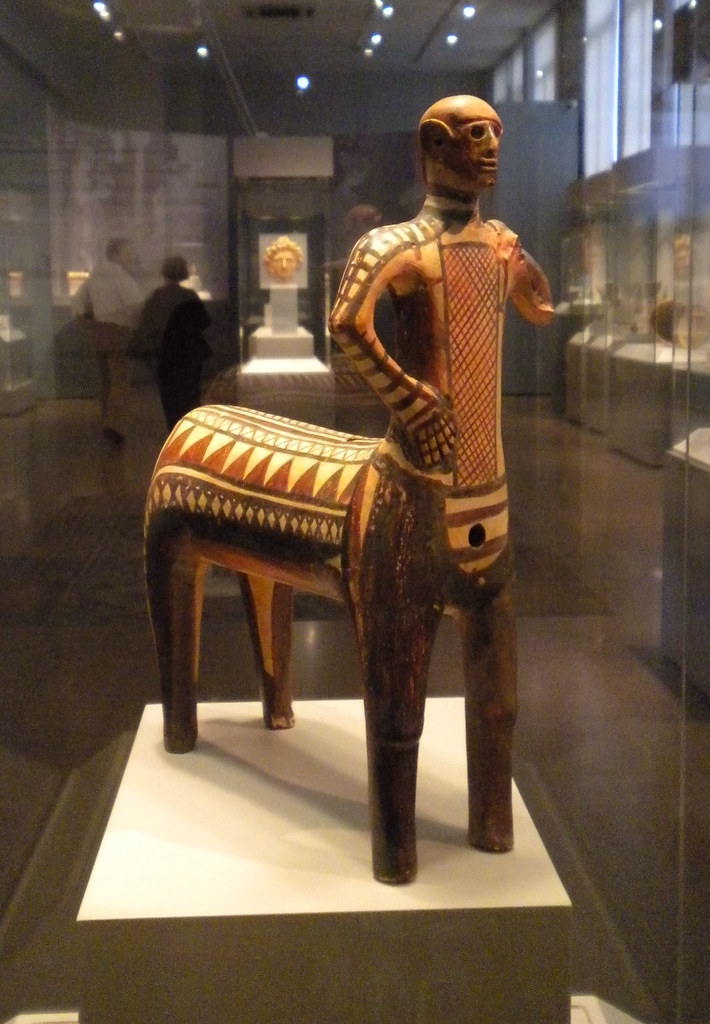 Protogeometric centaur original in the museum in Eretria on the island of Euboea
The following link from Lefkandi Classics leads you directly to the original with interesting explanations about this necropolis - please scroll down a bit:
lefkandi.classics.ox.ac.uk/Toumba.html
Protogeometric centaur original in the museum in Eretria on the island of Euboea
The following link from Lefkandi Classics leads you directly to the original with interesting explanations about this necropolis - please scroll down a bit:
lefkandi.classics.ox.ac.uk/Toumba.html
This terracotta centaur representation from the 9th century B.C. is the oldest plastic reproduction of a hybrid being between man and horse.
The site of this extraordinary exhibit is today's Lefkandi on the Greek island of Euboea with six necropolises. Most interesting is the cemetery Toumba with a 50 x 13.8 m large, multi-storey building, inside which the remains of a man and a woman were found, richly buried with iron weapons, gold jewellery and everyday objects from the Middle East and Egypt. Four horses with harness were buried with the dead. At the end of the funeral ritual, the hall, specially built for this purpose, was destroyed in the form of a tumulus, a burial mound.
Archaeologists prove a continuous settlement of Lefkandis since the 3rd millennium BC. The exploration of the burial places provides valuable insights, also because they can be put in context to the Homeric epics.
The head of the protogeometric Centaur was found in tomb T1 of the cemetery, the body three meters away, in tomb T3.
The original size of the Centaur is 35.5 cm, so the hand-painted and hand-potted replica is a reduction of 31.8 cm x 21.2 cm.
Original at the museum in Eretria, Euboea